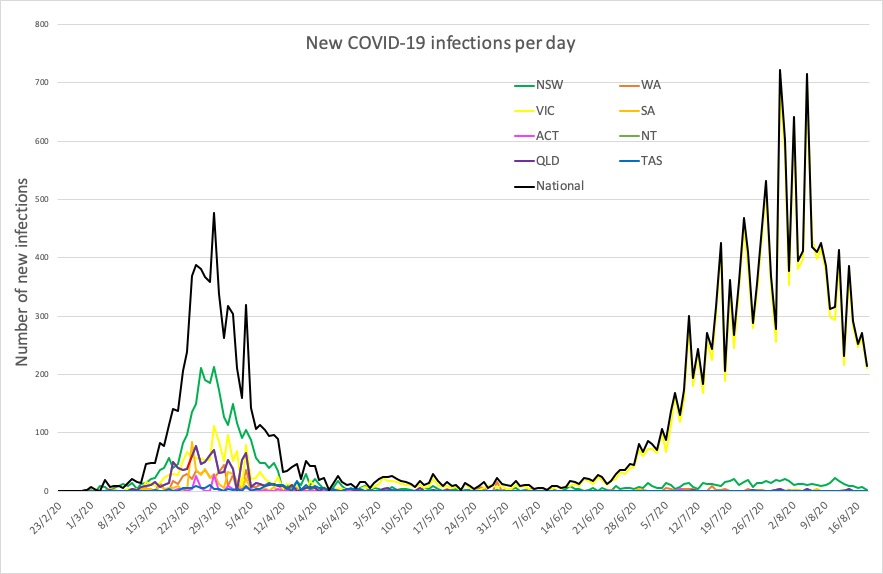Confusion reigns about whether a COVID-19 vaccine will be mandatory, and whether the Australian government has in fact signed an agreement to secure supplies.
Welcome to The Medical Republic‘s COVID Catch-Up.
It’s the day’s COVID-19 news into one convenient post. Email bianca@biancanogrady.com with any tips, comments or feedback.
19 August
- Schroedinger’s COVID-19 vaccine: mandatory but voluntary. Confusion reigns after government announcement.
- Some with mild COVID-19 show low or undetectable neutralising antibodies, study finds.
- Government information on COVID-19 shows poor readability.
- Latest confirmed COVID-19 infection numbers around Australia.
- A COVID-19 vaccine will be mandatory for Australians, but it will be voluntary. Australia has an agreement with AstraZeneca to secure some of the first supplies of the Oxford COVID-19 vaccine … except, it turns out we don’t.
There’s been a whole lot of lip-flapping and hand-waving from the Prime Minister and Health Minister Greg Hunt about what may or may not happen if or when a successful COVID-19 vaccine becomes available. The only certainty seems to be that no one has much of a clue what’s going to happen with a COVID-19 vaccine, when it’s going to happen, and how it will happen.
You heard it here first. - A significant number of individuals with mild COVID-19 have low or undetectable levels of the neutralising antibodies that would normally be a marker of recovery and protection against further infection, a study has found.
A paper published in JAMA Internal Medicine looked at the levels of neutralising antibodies to SARS-CoV-2 at hospital discharge in 175 patients who had experienced mild COVID-19. Thirty percent of these patients had low levels of neutralising antibodies, and one in five of these had levels below the limit of detection. Those who did not generate detectable levels of antibodies were younger and most were female, but otherwise showed no significant differences in disease duration or severity.
“It is not clear how these patients recovered without developing detectable virus-specific Nabs [neutralising antibodies],” the authors wrote. “Whether other immune responses, including T cells or cytokines, contributed to the recovery of these patients and whether these patients are at risk for reinfection is not known.”
The authors also saw that median antibody levels were significantly lower two weeks after discharge, and those who had undetectable levels at discharge didn’t show any increase even two weeks later.
They noted that this had implications for use of convalescent plasma in treating severe COVID-19, and also raised questions about whether these neutralising antibodies played a role in COVID-19. - Government public health departments could do a lot better with the readability of their COVID-19 information, a study has found.
Researchers examined COVID-19 information on 15 government websites and 3 public health agencies, including WHO, and rated the readability using five formulas (including one delightfully called the Simple Measure of Gobbledygook).
The results, published in JAMA Network Open, revealed that the information provided on all these websites consistently rated above the recommended reading level of grade 6-8.
“We found that official information about COVID-19 exceeded the recommended reading level, exhibited complex syntax, and used technical terminology,” the authors wrote. “Limitations included the focus on text, with no evaluation of multimedia communication, and lack of data about actual comprehension or relevant outcomes such as adherence to mitigation strategies.” - Here are the latest confirmed COVID-19 infection numbers from around Australia, to 9pm Tuesday:
National – 23,773, with 438 deaths and 682 hospitalised.
ACT – 113 (0)
NSW – 3959 (3)
NT – 33 (0)
QLD – 1091 (0)
SA – 462 (0)
TAS – 230 (0)
VIC – 17,238 (222)
WA – 647 (1)



